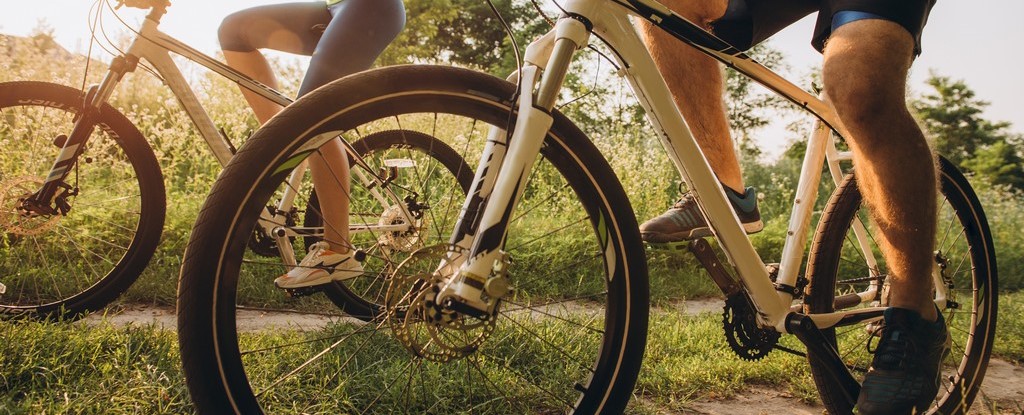Tennis Physiotherapy in Hamilton West Mountain & Ancaster
Welcome to Westmount Physiotherapy's guide for selecting tennis equipment. Tennis is a popular game around the world, partly because you don't need much equipment at all to enjoy the sport. We do recommend a few general considerations and reminders when selecting the equipment you will need in order to stay comfortable and minimize injury while playing tennis.
Racquet: The easiest way to find the correct racquet for you is to try a few out! When purchasing a new racquet, however, trying the racquet on the tennis court is not always possible, so following a few guidelines at the time of purchasing will help to ensure you choose the right racquet for your personal needs.
Tennis racquets used to be made of wood but now, with better man-made materials, the use of wooden tennis racquets is nearly obsolete. Most racquets today are made from graphite, with some also made from aluminum. These materials obviously lighten the weight of the racquet compared to the old wooden ones. Racquets that are even lighter are now being made with materials lighter and stiffer than graphite, but until you have mastered the game, it is best to avoid the super-light weight materials until they become more mainstream.
For beginner players a racquet with a large head, providing a large sweet spot is best. Over-sized racquet heads for younger players are also available which increases the likelihood of successfully connecting with the ball. Pre-strung racquets off-the-shelf will be appropriate if you are just starting out as they are strung to a medium tension allowing some power and some precision while also being forgiving. A few practice swings in the shop can assist in making the decision of which racquet 'feels right' even if you can't trial the racquet on the court.
If you are more of an intermediate player and can provide most of the power to your shot with your strength, then you will want to look for a smaller racquet that you can add finesse to your swing with. If you do not have a very strong swing, then a larger racquet that is stiffer and a bit longer will help you add the needed power to your swing. A longer racquet can also improve your reach, however, can also be difficult to control so this should be taken into consideration. There are also combination racquets which can provide a balance between power and finesse shots which may be a good option for intermediate players who have yet to confirm whether their power or finesse is their strong point. Advanced players may choose to have a couple of racquets to match the style of their tactic for each game.
The weight of a racquet is another purchasing point to be considered as it is variable. When the majority of the weight of the racquet is in the head of the racquet, it allows greater power during a swing. Heavier heads create the most power, mid-range weights offer mid-range power, and light-headed racquets are designed for less power and more control.
As a beginner or intermediate player purchasing a new racquet you may also be faced with the decision of what shape of racquet head you should buy. There are both oval and tear-drop shaped racquet heads. The decision partly comes down to what look you prefer, however the tear-dropped shape racquet head does provide a larger sweet spot on a greater area of the racquet face than that of the oval head. The oval head is more similar to a traditional tennis racquet where the sweet spot lies in the bottom half of the head.
As with any racquet sport, the type of string used and tension in the strings will make a difference to how the ball can be played. As mentioned above, for beginners and recreational intermediate players a pre-strung racquet can be used and generally provides enough versatility for recreational use. If, however, you are a more serious recreational player or an advanced player, you will want to buy an unstrung racquet and then get it strung according to your personal playing style and preferences. The properties affecting the strings are the material that the strings are made of, the thickness of the string, and the tension with which they are strung. There are many different materials that have been designed to string tennis racquets and it is therefore impossible to discuss an exclusive list here. All string materials, however, are developed to affect the power and precision available in a shot, the vibration felt down the racquet, and the longevity of the string properties. In general, thicker strings provide less power and spin but are more durable, whereas thinner strings provide just the opposite. String tension is the final component that affects the ability of the racquet. Overall, looser strings allow more power whereas tighter strings allow more control. Intermediate and advanced players may be very particular in regards to the tension in the strings as this can largely affect the play of the ball. In addition, strings can loosen quickly with a moderate amount of playtime, so if you feel any change in how the ball is being played it may mean that your racquet is in need of a re-string. Finally, it should be noted that all racquets come with a recommended manufacturer's string tension so it is best to stick within that range to get the most out of the racquet design itself. A thorough discussion regarding the string options available and what might be appropriate for your playing style is recommended with the tennis string expert at the time of the initial stringing. As always, trying out the racquet once strung will provide the most valuable information.
The grip, or handle of your tennis racquet, is an extremely important part of the racquet as it allows each player to feel the shot they are making. The biggest deciding factor for choosing a grip is comfort. A sports specialist can measure your palm and suggest a particular grip size to fit, but the grip still needs to be comfortable. Again, practice swings in the shop can be valuable in making the decision on one grip versus another. It should be noted, however, that too small or too large of a grip can lead to pain in your hand, wrist or commonly your elbow, so if the grip does not feel right even after a few games, it may be best to try a different one. That being said, if you can't decide in the shop, going with a smaller grip which can at least be built up with tape, may be the better choice rather than starting with too large of a grip. Some grips that are too fat can be shaved down, but not all of them, so choose wisely.
Ball: There are a wide variety of recreational tennis balls on the market and the ITF has given quality assurance to over 200 different brands, so choosing a ball can be difficult.
According to the International Tennis Federation (ITF) tennis balls used in competitive play need to be either yellow or white. Balls used for recreational play, however, come in many different colours. Competition balls are all made to a specific size, weight, deformation and bounce standard, however the recreational player will not necessarily need to play with competition standard balls.
Balls are either pressurized or non-pressurized. Most tennis balls are pressurized meaning that in their manufacturing they are filled with air and stored in a pressurized container. These balls eventually lose their bounce once the pressure slowly seeps out. In fact, as soon as you open the tennis ball can, the pressure starts to decrease so ensure you only open the cans once you are ready to use them. Non-pressurized balls get their bounce from the rubber they are made of rather than the pressure inside of them. They do not lose their bounce over time and are packaged instead in bags or plastic sleeves. Pressureless balls actually get bouncier or quicker as they age due to losing the outside fuzz, so more of the rubber shell is exposed causing a higher bounce. This extra bounciness, however, is not a positive effect as it means you cannot predict where the ball will bounce when trying to play the next shot. It is therefore best to discard the ball if you notice this occurring, and start with a new ball. Advanced players tend to use pressurized balls whereas beginners may find pressureless balls easier to handle. It should be noted that using any ball for too long and beyond when it has lost it's original manufacturer properties, or once they have simply aged through water exposure or overuse will force you to swing differently in order to make the same shot. This aberrant swing will likely mean you have to compensate by adjusting your technique to achieve the same shot. This change in technique can easily lead to injury and fatigue, so replacing your tennis balls regularly is a must!
The felt on the outside of the tennis ball serves an aerodynamic purpose, and the ball's motion will change if this felt wears down or fluffs up. Balls covered in extra-duty felt are designed to be used on the hard-court due to its rougher surface. Regular-duty felt is designed for use on clay courts which do not wear down as much on the ball.
Some manufacturers also classify their balls into quality types: 1) Professional level 2) Championship level, and 3) Recreational balls. Professional balls are obviously the highest quality ball made by the manufacturer. Recreational balls are considered practice balls. Championship balls are of intermediate quality and would be acceptable for recreational games.
Shoes:
Specific shoes made for tennis are recommended if you are planning on playing a lot of recreational tennis or are playing at an intermediate to high level. Tennis shoes are specifically designed to support your foot on the tennis court surface by providing extra lateral stability than other court shoes. This supports the repetitive and quick side-to-side motions of the sport. The use of plain runners versus tennis shoes can lead to more ankle sprains due to the higher heel height (made for shock absorption) in the runner, and also being that running shoes are not designed for any lateral or stop and go motion. It is therefore not advised to use running shoes when playing tennis. Other generic court shoes do not provide the additional lateral support that a tennis shoe provides, so if you are using plain court shoes instead of tennis shoes you may find your foot slipping around in the shoe and will see that the lateral side of the sole wears down very quickly.
When purchasing tennis shoes look for a sole that provides shock absorption without having too thick of a sole. Durability of the sole is also an important feature of a tennis shoe as the repetitive and quick movements wear down the sole quickly, particularly when playing on a hard-court. Clay and grass courts tend to be more forgiving. A good durable sole makes the shoe heavier than you would think so don't be surprised to find the weight of the shoes more than you expected when you pick them up.
When purchasing tennis shoes be sure to wear the socks you will use to play in and, if you wear ankle braces or orthotics put them on to ensure they fit the shoe. Overall comfort and a snug fit of the shoe is extremely important: if your shoes are too big you will quickly end up with blisters, and if they are too tight, you will experience pain and bruising in your toes and toenails (tennis toe). Replace your shoes regularly to maximize the support they give you; any visible smoothing of the sole or wearing through of the mesh means it is time for a new pair. A shoe expert at any good sporting store can provide valuable advice on finding the right tennis shoe for your particular tennis needs and the anatomy of your individual foot.
Socks:
Due to the repetitive motions required on the tennis court, blisters are common, but you can avoid blisters by both choosing the correct shoes as well as the correct socks. Blisters are caused by repetitive friction, heat, and moisture, so minimizing these factors will decrease your chance of developing them. Choose a sock that is form fitting (not tube socks) and one that is made with a breathable and moisture-wicking material. Ensure the sock fits extremely well as any slipping will cause excess friction. Some tennis players choose to wear two pairs of socks so any friction that does occur happens between the two layers of socks rather than against the skin. Lastly, ensure any hotspot (area that feels like a blister is starting) is tended to IMMEDIATELY. Avoiding blisters is much easier than treating them once they occur.
Clothing: Special clothing is no longer required to partake in tennis. At one time, all tennis players were required to wear white clothing that reflected the sun and kept them cooler. This rule no longer applies so choose any color you like and that you think might enhance your game! Many players choose loose clothing that allows them to stretch and reach repetitively without restriction, however good form-fitting clothing can do the same, so other players choose tighter, but stretchier gear. All gear should be made of a lightweight material that allows you to stay cool and also wicks sweat away from the body so it doesn't get weighed down as your game progresses. Many players choose shorts to play in but some women prefer to play in tennis skirts which is entirely acceptable as a skirt offers the ability to reach and stretch as needed throughout the game. There are a wide variety of tennis skirts, including one-piece varieties on the market so comfort and cost should be your final deciding factor. Many players also choose to complement their gear with a sweat band for their forehead to stop sweat getting in their eyes during a long rally, or wrist bands to allow a quick wipe of their brow with their wrist and avoid dripping sweat from obstructing their vision.
Sun Protection Gear: If you are playing outdoor tennis, don't forget sun protection gear in the form of sunscreen for your body and lips, and a well-fit sun visor or hat. Be sure to re-apply the sunscreen often particularly if playing in a full day tournament as the sun on a dark colored tennis court can be intense and you may not notice a sunburn until after the day has finished. Sunglasses, although providing great sun eye protection, are not generally used in tennis due to their ability to restrict vision, fog up, or fall off. A sun visor or hat is the preferred choice to provide shade for the eyes and assist with following the ball in the shining sun.
Hydration Gear:
Keeping hydrated during any activity will help you stay alert while training or competing, may help to prevent muscle cramps and will help your post-training or competition recovery. Tennis is no exception. If you use your own drink bottles you can easily monitor your fluid consumption. We recommend that you drink about 350-450 mL before arriving at a match, and 250mL (1 cup) of water or sports drink every 20 minutes during the match (ref: http://www.ausport.gov.au/sportscoachmag/nutrition2/pre-event_nutrition) and for one hour after the match. Your fluid requirements will vary depending on the environmental conditions and your body size. If you are participating in a tournament you will need more water than if you are engaging in a single game so hydrate accordingly. Obviously, playing under the sun versus on an indoor court will also require that you increase your fluid intake to avoid dehydration and heat exhaustion.








